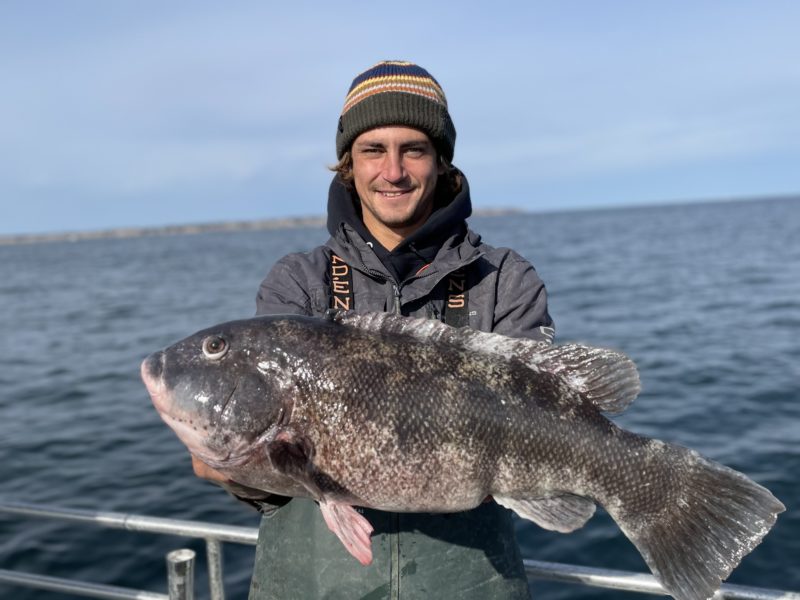

The weather gods were fairly nice to fishermen over what was effectively the final week of the fishing season on Long Island.
While Mother Nature took a few extra days to get on the same page with the human forecasters, fair winds, mild temps and calm seas settled in for the last couple of days of the black sea bass season and gave plenty of local anglers one more chance to stuff their freezers for the winter. The sea bass were still plentiful and hungry.
There have been a few cod on the wrecks offshore of Montauk and Shinnecock, but thus far there have not been enough to make trips offshore worthwhile, really.
The striped bass hardcores are still finding some active stripers in the winter holdover spots.
Herring began flooding into Shinnecock Bay last week, too, and can be caught off the commercial docks and should get into the canal any day. I have not heard about any in Three Mile Harbor yet, but that would be a good place to look if you’re itching to do some pickling.
And there is freshwater fishing to be had. Those fish don’t migrate. They get tough to catch, but there are some to be had if you’re patient and durable. Walleyes, of course, are just coming into their favorite time of year if you know a place where they prowl. There are a couple in our region.
Luckily, the weather switched to more waterfowling-friendly conditions just as soon as the window began to shut on fishing. Monday was the finest hunting weather we’ve had since the season opened, so perhaps there is hope for the last half of the season.
I’ve been hearing a lot of grumbling from hunters that we are really at the point where our hunting season should be shifted well later in the year, allowing us to hunt into February.
Losing the holidays, which many of us have cherished memories of spent in hunting blinds with family, would be disappointing, but the reality of our reality is that there just aren’t many ducks migrating into our region until January. Certainly, there are those with spots who have decent enough hunting even when the weather is mild and calm, but those spots are getting fewer and farther between each year and those who rely on the birds moving around the open bays and searching for calm ponds in winter gales spend a lot of time scanning long-term forecasts in November and December and seeing little inspiration.
Personally, I don’t even start watching the skies around my blind until mid-December, and hadn’t taken a gun to the blind until this weekend. It’s time to put in some effort.
In between, however, it’s time to start repairing the disarray that the fishing season wreaks on tackle. When you dive into that always soothing chore this winter, I would like to again implore you to remove the rear treble hooks from any lure that you might throw at a striped bass.
I’ve spent the last two winters replacing rear hooks on boat and beach plugs. On some, I have replaced them with single hooks — either open-eye swish or the new inline singles, and I haven’t decided which I prefer — or on some I have just left the rear of the plug bare. Being the cheapskate that I am, I see each hook removed from the back of a plug as a new one to drop into the box for replacing rusted and wrecked hooks on other plugs.
We recreational anglers kill the vast majority of striped bass that die each year — something in the neighborhood of 6 million fish — and nearly half of those are fish that we caught and released. That is a ratio that simply has to be reduced in every way possible. A trophy striped bass with the treble hook of a wooden surf plug down its gullet, which take precious minutes out of the water to remove and leaves fatal wounds behind, will never be caught again.
It’s a small step, but our supply of large fish is only going down, and once it’s faded out, it will be a long time before we see the numbers of these fish around again, so every one that get released and can be caught again is a victory.
Thank you. Shoot ’em up. See you out there.
 More Posts from Michael Wright
More Posts from Michael Wright